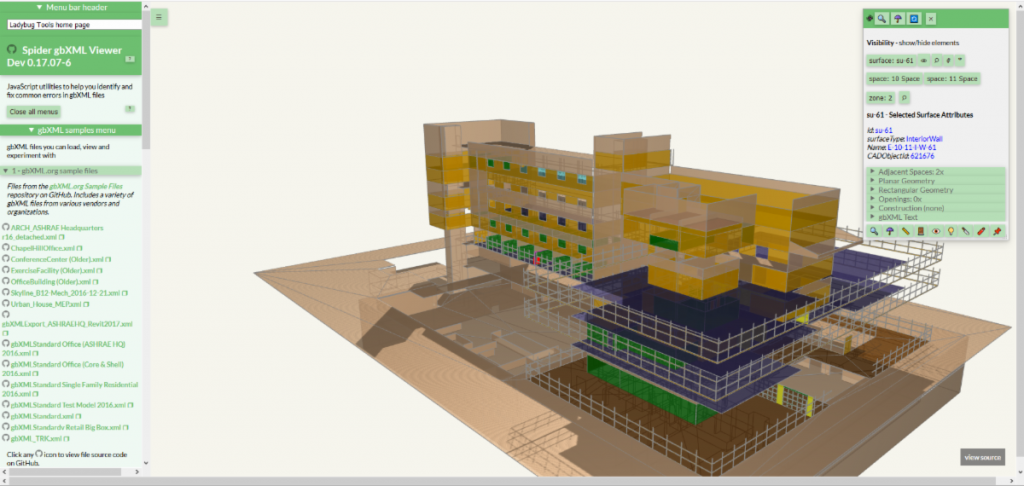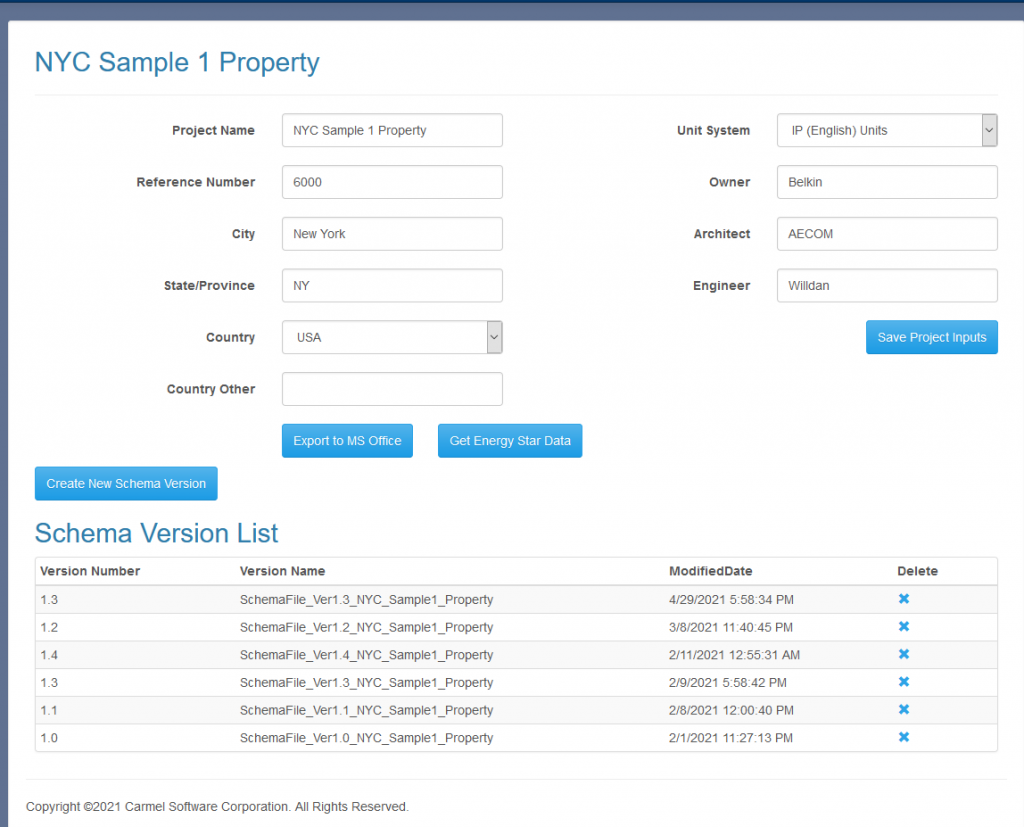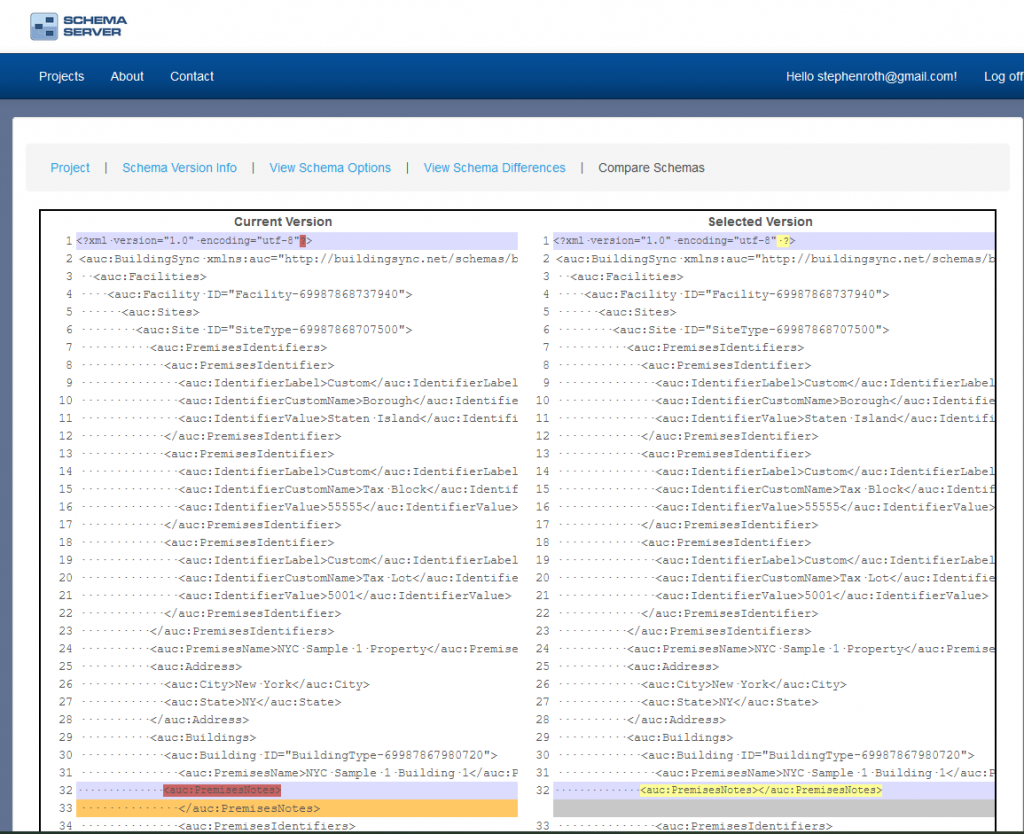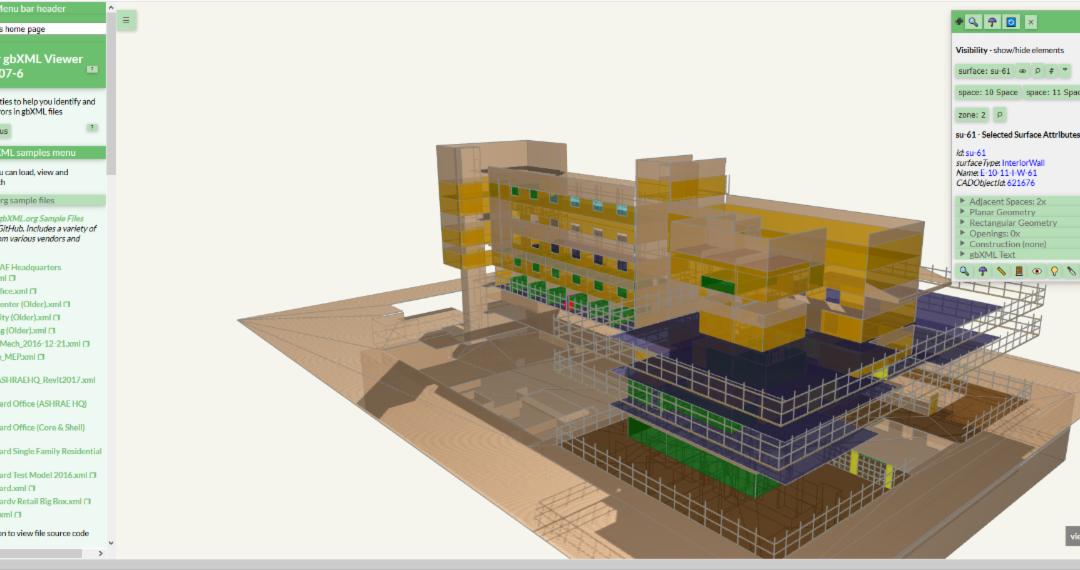In June of 2020, Carmel Software received a U.S. Department of Energy Small Business Innovation Research (SBIR) grant to develop a new software tool to help energy modelers and energy auditors better design and maintain energy efficient buildings. The details of that grant were detailed in a prior blog post. This blog post will detail the progress that we have made so far. First, we need to restate the problem that has become even more urgent since last year:

As part of its national infrastructure plan, the Biden Administration has set a goal to retrofit 2 million commercial and residential buildings over the next 4 years. Energy usage and energy auditing data for these buildings need to be stored in a consistent manner to help achieve this aggressive goal.
Simulating the energy usage of buildings using sophisticated software has become a key strategy in designing high performance buildings that can better meet the needs of society. Automated exchange of data between the architect’s software design tools and the energy consultant’s simulation software tools is an important part of the current and future building design process.

Steady progress over the past two (2) decades has led to computers having a pervasive impact on the building design industry. Building Information Modeling (BIM) and advances in building energy modeling (BEM) software have resulted in their adoption into the mainstream design process. BIM authoring tools are being adopted by more architects and engineers as these tools improve and become faster and easier to use. The whole premise behind BIM is that it is essentially a “database” where all the building information, including the geometry, is stored.
However, there is a fundamental disconnect between many of the BIM, BEM, building analysis, building asset, and building auditing software tools. Because these tools are developed by 10s, if not 100s, of different software vendors throughout the world, many of these tools do not “talk” with one another despite the fact they many of them require the same information about a building: i.e. – building square footages, wall areas, window areas, occupant densities, plug loads, occupancy schedules, and much more. There are many software tools in the building design, analysis, and auditing industry that allow engineers, architects, and energy modelers to perform the following types of analysis, including whole building energy use, heating and cooling load analysis, lighting analysis, CFD analysis, solar/shading analysis, life-cycle cost analysis, energy benchmarking, energy auditing, and more.
The fact that many of these tools do not talk with one another discourages wide use of these software tools by energy modelers and other related practitioners. This is where “interoperability” comes into play. Interoperability allows for the sharing of data between different software tools developed by many different vendors. Interoperability is essential for BIM to realize its potential as a transforming technology as opposed to 3D CAD programs that are limited in their use as holistic building design tools. In addition to BIM and BEM software, interoperability applies to additional software tools related to building asset information, building audit information, and energy benchmarking. This is where schemas such as gbXML, HPXML, BuildingSync XML, IFCs (Industry Foundation Classes) and others become quite relevant. For example, BuildingSync is a schema developed by the National Renewable Energy Lab (NREL) that allows for the exchange of building energy audit information such as energy efficiency measures, utility data, and building rating information. This information can be used by other types of software tools including energy benchmarking software (such as ASHRAE Building EQ (https://buildingeq.ashrae.org ), energy auditing software such as buildee, and custom software developed by cities and municipalities to satisfy energy auditing rules and mandates. Another example is Green Building XML (gbXML) which is the “language of buildings”. It was developed to facilitate the transfer of building information stored in CAD-based building information models, enabling interoperability between disparate building design and engineering analysis software tools. It is currently supported by over 55 software tools worldwide.

While interoperability schemas have been around for twenty (20) years and are integrated into all major BIM and building performance software tools, end-users still struggle with inefficient and ineffective workflows. For example, geometric information from one BIM authoring tool is not properly represented in a popular HVAC load calculation software tool developed by a third-party vendor. While users can always manually edit and tweak data in an XML file (fortunately, it is clear text) so that it successfully imports into a consuming software tool, the ideal interoperable workflow should not include any type of human intervention. In fact, the ideal workflow would comprise of seamless data transfers between software tools with a simple press of a button. While this may be a utopian vision, there is no reason why the current state-of-the-art cannot be dramatically improved.
In the original Phase I funding opportunity announcement (FOA), DOE’s Building Technologies Office (BTO) requested that research and development be conducted for innovative delivery models for increasing access to building asset data from tools such as Home Energy Score and Asset Score (https://buildingenergyscore.energy.gov/). For Asset Score’s Audit Template tool, one of the ways to increase access to this data by third-party software tools is using an interoperability schema such as NREL’s BuildingSync XML.
BTO asked that bidders suggest new workflows for either BuildingSync or HPXML. Our proposal focused on BuildingSync XML since we wish to target the commercial building space. We suggested developing a comprehensive web-based portal (or Software as a Service, SAAS) that would help facilitate the adoption of BuildingSync and other similar interoperability schemas by third-party building analysis, auditing, and benchmarking software tools. In our 20 years of experience developing and managing the popular Green Building XML (gbXML) schema, we have come to realize that schemas do not work for end users unless there is some type of “transport” mechanism and validator modeler that ensures successful importation into a consuming tool in a straightforward and efficient manner.

As part of Phase I of the FOA, Carmel Software developed a prototype of the SAAS described above, called Schema Server. This tool can import a BuildingSync XML file from any source (including U.S. Department of Energy’s Asset Score Audit Template), perform basic validation using Schematron technology. Additionally, this tool can import additional data for the same building from Energy Star Portfolio Manager and then send it over to a consuming software tool such as ASHRAE Building EQ to receive a building energy benchmarking score. Building EQ assists in the preparation of an ASHRAE Level 1 commercial energy audit (as defined by ASHRAE Standard 211) to identify means to improve a building’s energy performance including low-cost, no-cost energy efficiency measures and an indoor environmental quality survey with recorded measurements to provide additional information to assess a building’s performance.

Also, as part of Phase I of the FOA, we conducted a lot of market research. The reason we were able to do this is we were accepted to DOE’s Energy I-Corps program, a key initiative of the Office of Technology Transitions. This program pairs teams of researchers with industry mentors for an intensive two-month training where the researchers define technology value propositions, conduct customer discovery interviews, and develop viable market pathways for their technologies. Researchers return to the lab with a framework for industry engagement to guide future research and inform a culture of market awareness within the labs. In this way, Energy I-Corps is ensuring our investment in the national labs is maintaining and strengthening U.S. competitiveness long-term.
We found the Energy I-Corps training to be very valuable. It taught us some great concepts such as the Business Model Canvas, the Ecosystem Model, Timeline, Lean Startup Method, and other great concepts. In addition, and most importantly, it held us accountable to conduct 30 interviews within a 6-week period. In fact, we ended up conducting 60 interviews over a 6 month period. As we got better at interviewing, we were able to really target the right stakeholders and get the exact type of information we needed to develop a better software tool.
We recently developed a proposal for Phase II of this FOA that will add much more functionality based upon our interviews with industry stakeholders. The critical need we are focusing on is getting energy auditing and performance data from one software tool to another so that stakeholders are able to do the work accurately and quickly and make better decisions for building energy design and retrofits. For Phase I, we focused on just one workflow for our prototype: Transferring building energy auditing data from Asset Score Audit Template to the ASHRAE Building EQ benchmarking software discussed above. After interviewing the 60 potential stakeholders discussed above, we determined that the above workflow does not satisfy an overwhelming need for most users. However, this software platform (Schema Server) that we created in Phase I will be the basis for Phase II development.
For Phase II, we will be expanding the number of software tools that Schema Server currently focuses on. We will also be combining disparate data about the same building from multiple sources: 3D geometric data about a building may reside in a popular BIM authoring tool while historical electrical utility data may reside in Energy Star Portfolio Manager and energy auditing data may reside in Asset Score Audit Template. There are many other features we will be incorporating that will be discussed in future blogs.

